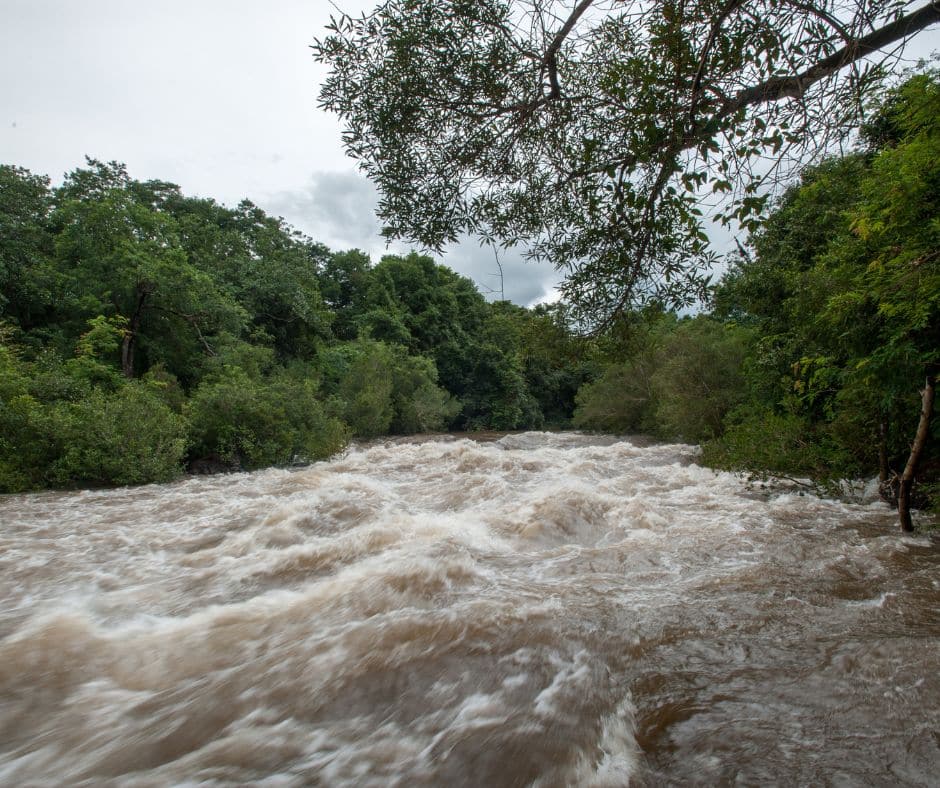Flood season foods in Costa Rica
When the rivers overflow and fields transform into shimmering lagoons, Costa Rica’s flood season reveals a little-known culinary bounty. It’s not just about survival—it’s about flavour, tradition, and knowing where to look when the landscape turns liquid. As locals slip into canoes or wade barefoot through the shallows, they’re not just foraging—they’re unlocking a secret menu that only appears when the waters come.

What kinds of food appear during flood season?
Flood season brings out hidden ingredients that are rarely seen or tasted during drier months. These foods are tied to the land and the water’s rhythm:
- Sábalo and Guapote – These freshwater fish suddenly become easier to catch as they migrate into flooded lowlands. Sábalo is bony but revered, while guapote (also called rainbow bass) is prized for its firm, flavorful flesh.
- Zapote and Caimito – These sweet, sticky fruits fall from trees during storms and float downstream like tropical treasure. Zapote has a creamy texture and caramel flavor, while caimito is like a juicy star in a purple jacket.
- Quelites and Purslane – Wild edible greens that shoot up wherever the soil turns moist and rich. Quelites are earthy and slightly bitter, great in tortillas. Purslane is juicy, lemony, and loaded with nutrients.
- River Snails and Prawns – Easily spotted when floodwaters push them across flatlands or onto riverbanks. Locals scoop them up by the basketful for broths and rice dishes.
How are these foods harvested?
Gathering these treats is a mix of skill, tradition, and a little improvisation. Some creative harvest techniques include:
- Canoeing through orchards – Fruit is picked straight from the water’s surface or low-hanging branches, without ever touching land.
- Casting lines near flooded paddies – Fish wander through submerged rice fields, turning farmland into a makeshift fishing spot.
- Handpicking greens along riverbanks – Fresh shoots sprout by fences and trails—collected just above the waterline.
- Bridge baskets and window nets – In some villages, people lower nets from porches or bridges, scooping up snacks as they float by.
Are these foods part of Costa Rican culinary traditions?
Absolutely. Flood-season ingredients have long been part of rural and Indigenous food traditions. Families wait all year for the chance to cook up these once-a-season dishes:
- Sopa de Sábalo – A rich, savoury stew made from the prized (but bony) sábalo, seasoned with garlic, onions, and culantro.
- Tortillas with Quelites – Fresh wild greens folded into soft corn dough, served hot off the comal.
- Rice with River Prawns – Juicy prawns cooked with cilantro, coyote, peppers, and a splash of local broth.
- Zapote Batidos – Thick, smooth fruit shakes blended with milk and ice—taste like creamy toffee in a glass.
Why are these foods only available during floods?
Because floodwaters change everything—they push fish into new territory, knock fruit off trees, and trigger explosive plant growth in wet soil. The landscape becomes a moving buffet. This temporary foodscape is shaped by:
- Fish spawning cycles – Species like sábalo and guapote travel upstream to breed, making them more visible.
- Heavy fruit drop – Storms loosen ripe fruit from trees, sending it drifting into rivers and estuaries.
- Wild plant bursts – Moist, disturbed soil causes nutrient-rich greens to grow almost overnight.
- Currents carrying seeds and creatures – Even turtles, seeds, and frogs can show up in places they don’t usually belong.
Is foraging for flood food safe?
With experience and local knowledge, yes. But there are definitely risks if you don’t know what you’re doing. Smart foraging rules include:
- ID your greens – Some edible plants have toxic twins. Don’t eat anything you can’t identify.
- Pick fresh fruit – Only collect unbruised fruit that’s just fallen, not rotting.
- Avoid still, murky water – It can host bacteria, chemicals, or snakes.
- Wash everything – Always rinse wild food thoroughly before cooking or eating.
Where can you find these foods?
Flood-season delicacies thrive in regions with rivers and tradition. Look in areas like:
- The Caribbean lowlands – Rivers overflow near communities that have relied on this cycle for generations.
- Sarapiquí – Known for its rich biodiversity and deep culinary roots.
- Southern Puntarenas – Where villagers use the flood season as both a pantry and a pastime.
You might stumble upon:
- Canoe-side vendors – Selling fresh sábalo and greens right from the boat.
- Informal roadside stalls – Overflowing with zapote, caimito, guaba, and more.
- Porch-drying greens – Seen on tin roofs and hanging lines as families prep meals together.
How do locals celebrate this seasonal abundance?
Flood season isn’t just a necessity—it’s a moment of joy and pride. Communities embrace the bounty with:
- Cookouts and street feasts – Where neighbors share their catch of the day.
- Ingredient swaps – Families trade fruits, greens, or prawns depending on what the river gave them.
- Storytelling – Legends of “magical fish” that only appear during full moons, or talking trees that guide the harvest.
FAQ
Q: Can tourists experience this seasonal food hunt?
A: Yes! Some eco-lodges and cultural tours offer guided foraging and flood-season cooking classes.
Q: Are these foods available in supermarkets?
A: Not usually. They’re either sold fresh in local markets or eaten the same day.
Q: Is it risky to forage in floodwaters?
A: It can be. There may be snakes, sharp debris, or strong currents. Locals know where and when it’s safe.Q: What’s the most loved flood-season food?
A: Sábalo is a local legend, but zapote batidos are a sweet second for dessert lovers.






